WaterScope: A rapid‚ handheld bacterial contamination test for drinking water
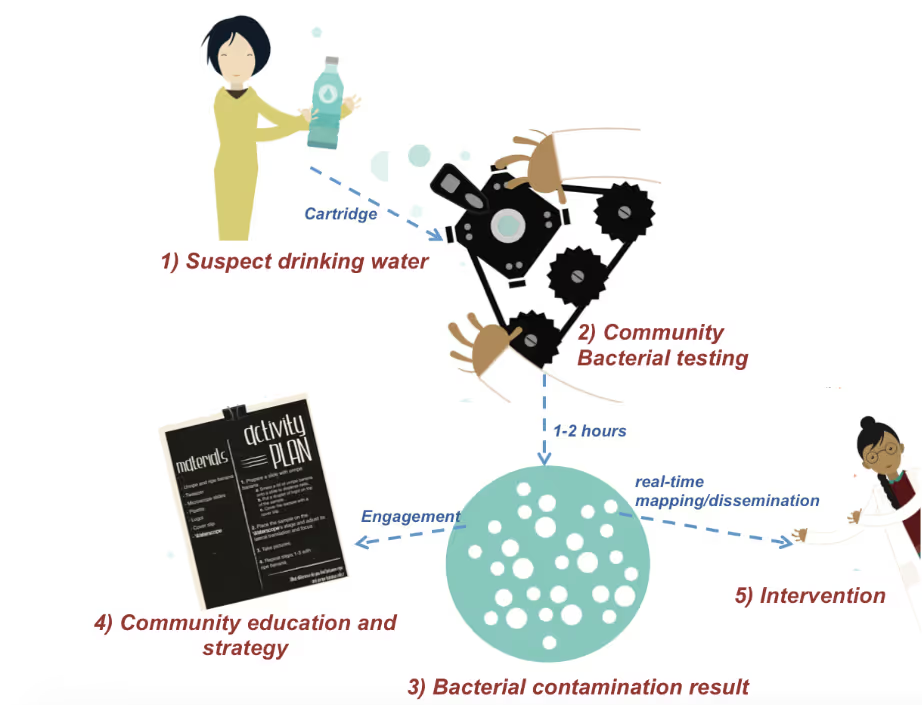
Background
Over 660 million people lack access to clean drinking water, with over 80% living in rural communities; these communities solely rely on external aid. Existing tests are slow, expensive and require significant training, resulting in infrequent testing, and poor dissemination to key stakeholders within the community. At WaterScope we believe that a bottom-up method is the most effective to create meaningful sustainable change. We are developing a handheld test, simple enough to be used in any location, allowing tests to be done at a community level (Figure 1).
[caption id=attachment_9047" align="alignnone" width="600"]
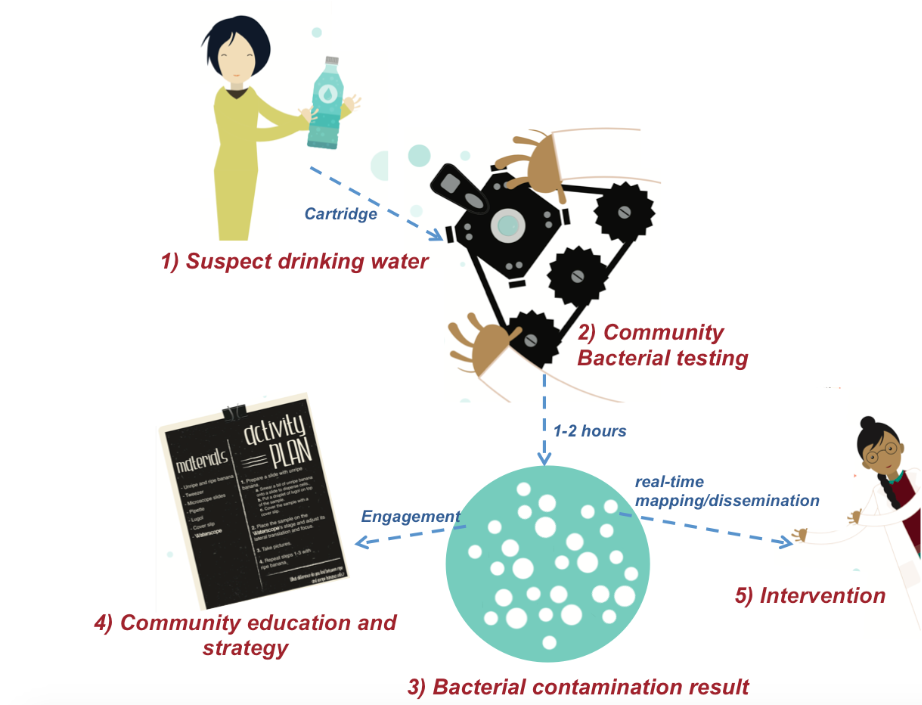
WaterScope’s proposition. With our method communities can test suspect drinking using our disposable cartridge and testing system. Results are achieved in less than 2 hours, with results displayed locally for community education and strategy, and also uploaded to a database for mapping, dissemination and intervention.[/caption]
Our technology and vision
Our test is based on a 3D-printed microscope developed at the University of Cambridge by Dr. Richard Bowman. Traditional methods require the bacteria to be grown on nutrient medium until they are large enough to be seen by eye. Our microscope allows us to identify bacterial growth directly, allowing us to identify bacteria in under two hours.
A big challenge when working with bacteria is ensuring the sample does not become contaminated; typically, bacterial analysis is done in a lab, in a fume hood, with gloves, labcoat, ethanol, with the user being trained in aseptic technique. Bacteria is present in large numbers in the air, surfaces, on our skin, and hair. It is extremely easy to contaminate your sample! To get around the need for complex machinery, and significant lab training, we are developing a sterile, disposable cartridge, allowing us to maintain the sterility and integrity of a test. The cartridge will be simple to use and affordable (<;£1), allowing it to be used in a low resource setting, with little training.
Another issue with conventional microbiology is recognising what is bacteria, and what is not bacteria; this requires a level of training that most people without clean water simply won’t have. We are creating software that can automatically recognise bacterial growth. The software will produce a quantitative number, giving an indication of how much bacteria was in the water initially; this information will be saved on the device, and uploaded to the cloud when possible for dissemination, cross-checking and real-time intervention. In parallel our device will provide a simple output of either, red, amber or green, indicating the bacterial contamination level for communities.
The device is battery powered, which can be charged using a solar panel. The quantification is done on the system, with uploading performed when it comes into signal, either by SMS or Wifi; crucially the device is fully functional as a water contamination test without internet and mains power.
Project aims
The project will increase the robustness of our current prototype, before testing in the field in Tanzania. Constant feedback and alteration from end-users in the field is important. We will go on a field trial in July 2017 in Tanzania. Before field trial we are making our prototype field-worthy. This includes development of the cartridge system and integration of the microscope into a robust case.
Progress so far
[caption id="attachment_9048" align="alignnone" width="600"]
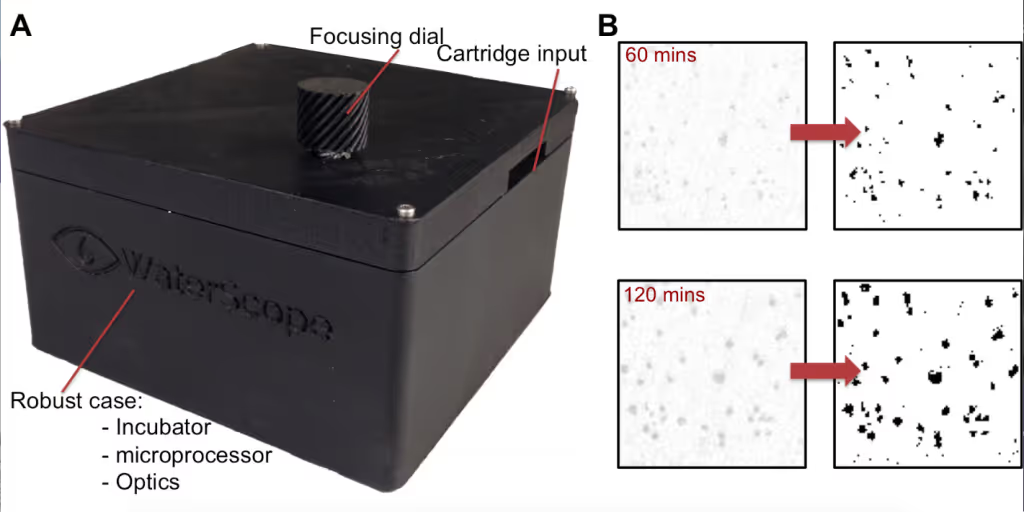
Robust prototype designed. All electronics and optics enclosed. The design is simpler decreasing assembly time while increasing reliability. B: Crop of an image taken with new microscope (left). Post-quantification images (right)of bacteria, taken with our microscope can identify bacteria as early as 60 mins; after 120 mins significant bacterial growth is observed.[/caption]
Prototype development
Until now we have been preparing our prototype for field trial. We have refined our system to make it more robust; this includes development of a case, decreasing complexity of the translation stage, and enclosing the hardware (Figure 2, A). Further we have developed the optical system to make it more sophisticated, producing a larger imaging area, increasing test sensitivity. We have incorporated a simple heater to allow local incubation of bacteria; this has all been done whilst keeping the prototype affordable, under £150. Using our new system we can identify bacterial presence in less than 2 hours. We have also established a mechanism of detecting bacterial growth, using ‘off the shelf’ open-source software (Figure 2, B). The wider field-of-view is a large improvement, allowing for a greater number of tests to be performed. Lastly, our disposable cartridge has been prototyped, with very encouraging results. We have tested it in the lab, and will now look to test it locally in Cambridge.
Local manufacturing
Solving water inequality is multi-factorial, posing numerous societal, economical, manufacturing, and logistical challenges, each of which may be country dependent. For example, to promote sustainable development, solutions must empower the user, and promote stimulation of local economies. To address this, we are working with local manufacturing initiatives, including STICLab, a ’digital blacksmith’ in Tanzania, and Juakal Box in Kenya, with whom we are establish local manufacturing stations. Further, STIClab are making microscopes from recycled filament from old plastic bottles.
[caption id="attachment_9049" align="alignleft" width="300"]
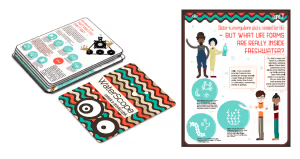
Educational materials developed by WaterScope to use in schools. The set is a pack of ten A4 cards.[/caption]
Community engagement
In collaboration with Dr Sara Serradas Duarte (working for the a global challenge initiative, Centre for Global Equality, Cambridge) and graphics designer Beatriz Botão Alves, we have designed educational materials to go alongside our water test. They can be used in schools to allow children to learn about the need for good sanitation and clean drinking water, encouraging local communities to test their own drinking water. We will be trialling our educational cards in summer 2017 with Cambridge Development Initiative.
Next stage of the project
Once cartridge prototyping is complete, we will begin field trials, first in Cambridge in June, followed by Tanzania in late July. The field trial will be in conjunction with our collaborators STIClab and Oxfam. We expect significant iterations to our design once the field trial is complete. It is important that prototyping is done with constant feedback from consumers; the system will be tailored to the problem we are addressing.
;
Photo Credit: WaterScope
Stay updated
Sign up for our newsletter to receive regular updates on resources, news, and insights like this. Don’t miss out on important information that can help you stay informed and engaged.
Related articles
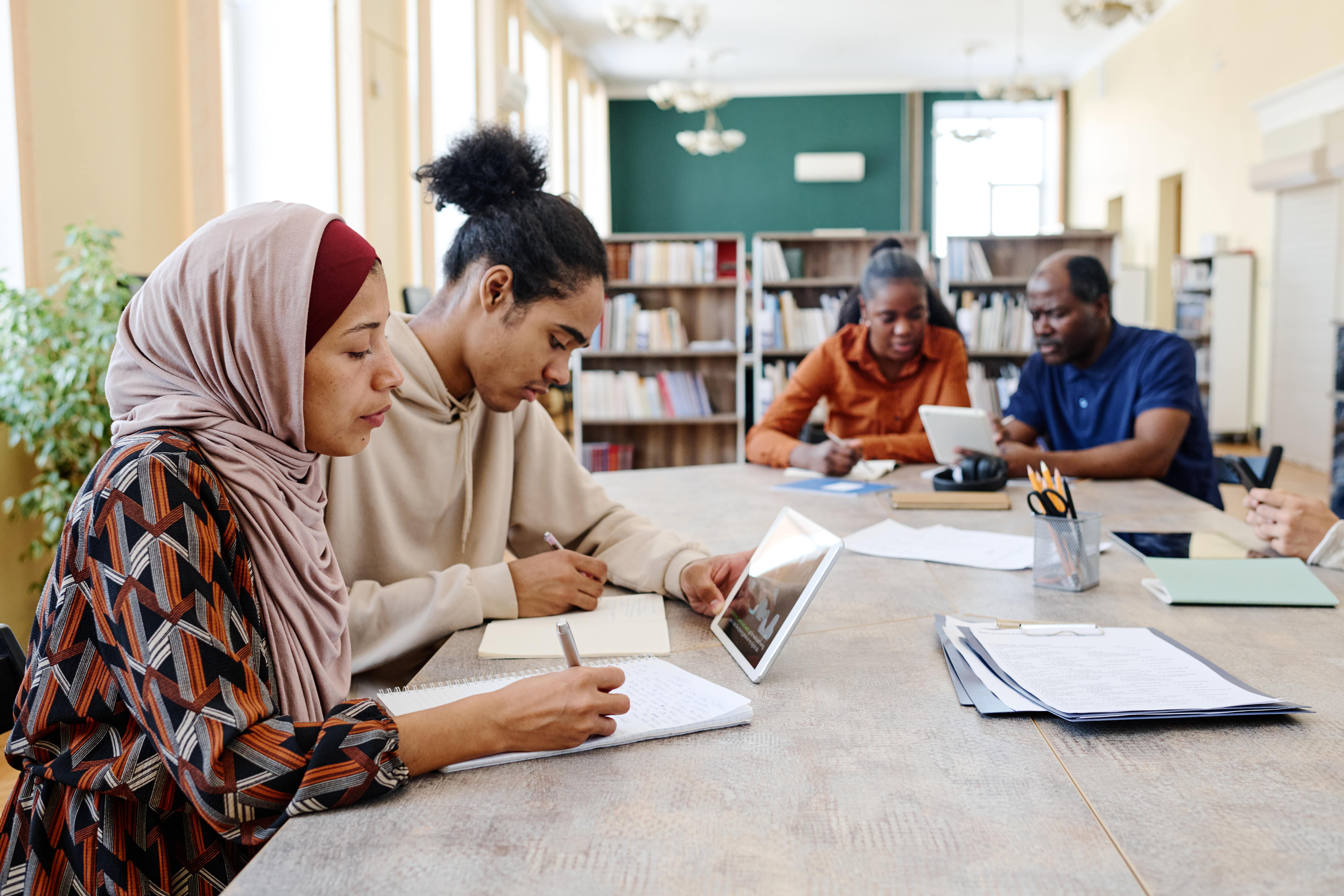
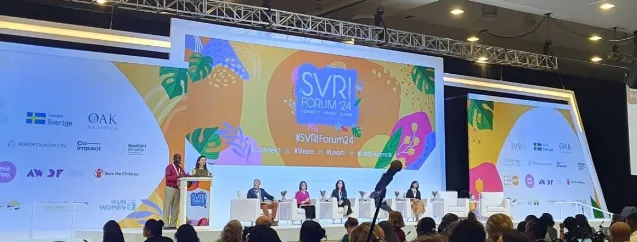
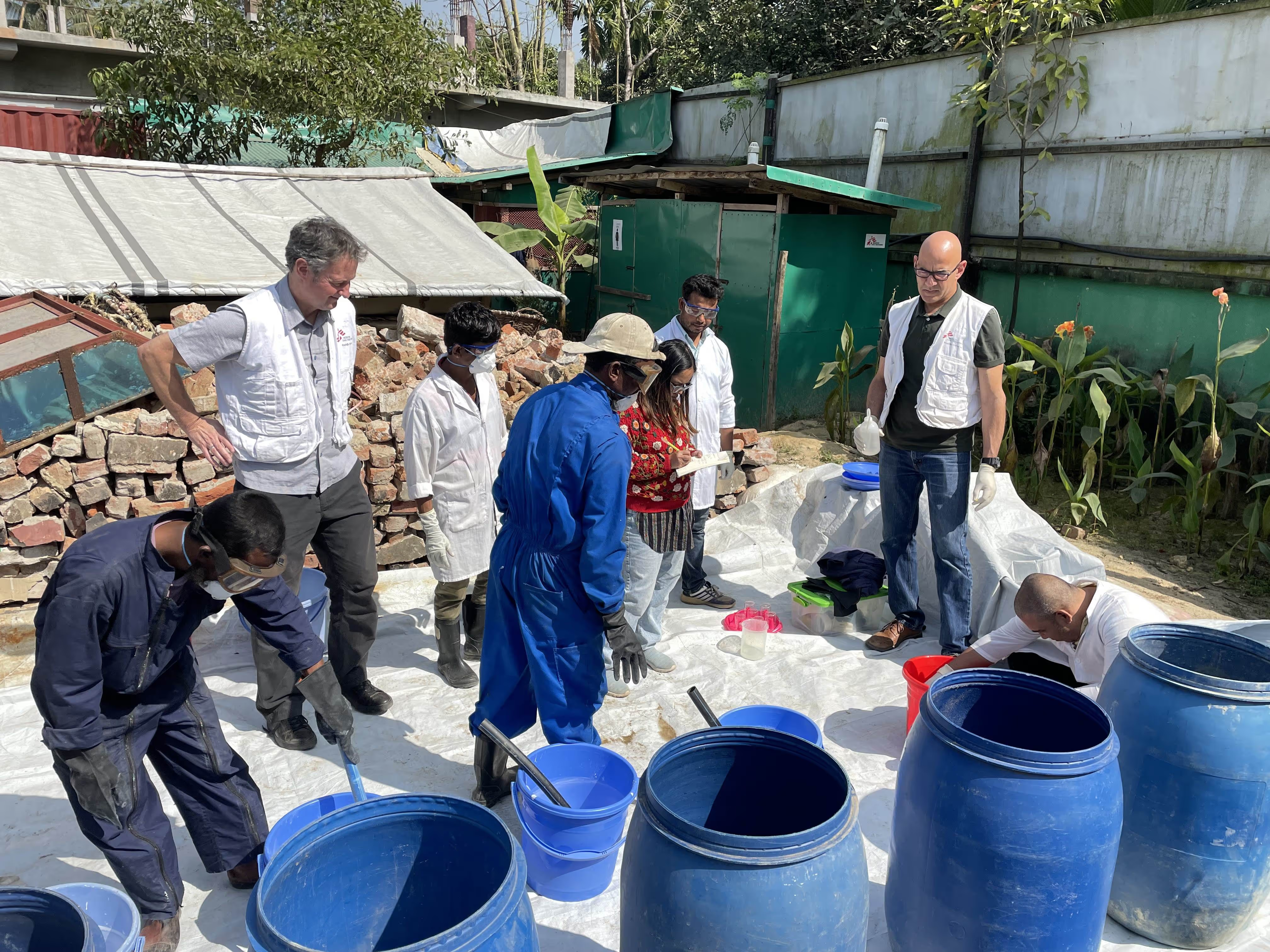
Explore Elrha
Learn more about our mission, the organisations we support, and the resources we provide to drive research and innovation in humanitarian response.